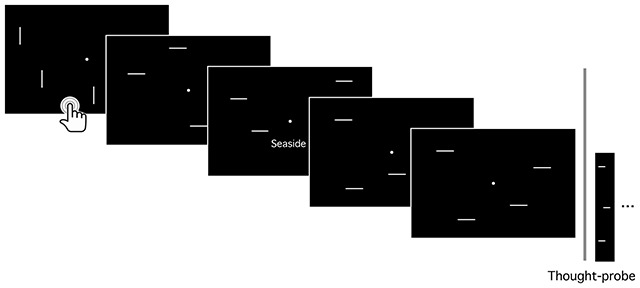Figure 1.

Experimental paradigm: vigilance task with task-irrelevant cue-words. A thought-probe method was used to collect self-reports about the subjects’ focus of attention during the task. Participants were asked to focus on the central fixation point and press the spacebar whenever a target (vertical bars) was detected. At 28 fixed points, the task was stopped by a thought-probe, which included the following questions: (i) “What were you thinking about just immediately prior to the probe?”; if participants reported a thought they were asked to (ii) give orally a short description of their mental content, (iii) indicate if the thought occurred spontaneously, if they deliberately decided to think about it or if they were not sure about the answer, and (iv) whether the thought had been triggered by the environment, by their own thoughts, by a word on the screen (if so, to specify the word) or if there was no trigger (see Method section).
